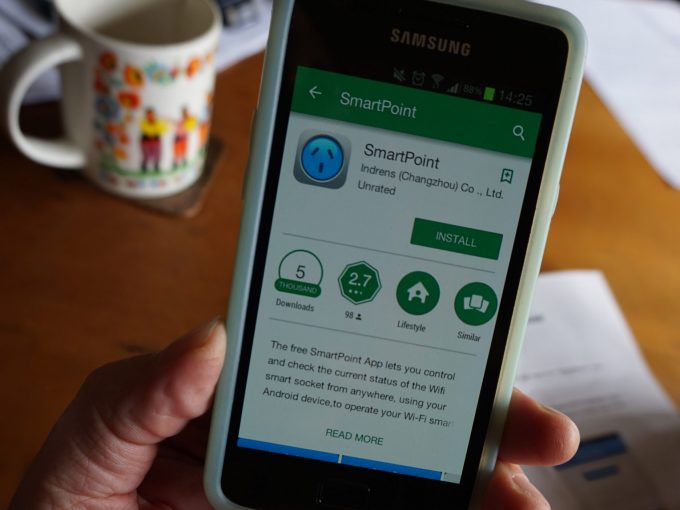In recent years, Australian municipal governments have significantly expanded their investment in digital infrastructure and services, adding to their responsibility for physical infrastructure and community services.
This move has brought significant challenges for the local government sector. Investment in municipal fibre and wireless networks has surged globally, as city governments embrace new opportunities in knowledge or smart economies, or adopt new forms of data-driven urban management. On the demand side, local authorities face expectations of residents, local businesses and tourists for public Wi-Fi, ‘smarter’ approaches to municipal service provision and citizen engagement, and support for new ventures such as driverless vehicles. Responding to such aspirations and demands calls for new policy and operational frameworks adapted to a dynamic technological environment.
My research in this areais located within the broad field of critical infrastructure studies. This approach aims to ‘unblackbox’ infrastructure and expose the social, economic and political forces that shape infrastructure investment. Recent scholarship in this field builds on the foundational work of scholars such as Hughes (1983) on energy networks, and Star and colleagues (Star, 1999; Bowker and Star, 1999) on information systems, reaching into diverse areas of media studies, cultural studies and digital humanities research (Parks and Starosielski, 2015). These scholars are not simply concerned with infrastructure’s role in undergirding city operations. They contend that the experience of infrastructure is a major element in the culture of late modernity. More than two decades ago, Williams (1993, p. 381) argued that infrastructure is “the outstanding feature of the modern cultural landscape”. The subsequent emergence of the cellular or mobile phone as an increasingly powerful and ubiquitous personal infrastructure surely strengthens Williams’ argument.
In this short piece I overview this field, looking backward to trace the trajectory of what we might call digital urbanism, and forward to the horizon of new developments. In particular, I will focus on mobile wireless communications, which has been the locus of significant investment by city governments.
Public Wi-Fi & Mobile Communications in the City
2017 marked important anniversaries of two technologies that have significantly impacted on city design, urban services, economic life, and social behavior: Wi-Fi and smartphones.
Twenty years ago, in 1997, a new technical standard for wireless local area network communications was released by the professional body that presides over standard setting in the computing and communications world, the Institute for Electrical and Electronic Engineers (IEEE).
Few non-specialists would recognise the meaning of a wireless local area network, so IEEE developed the Wi-Fi brand to aid popular recognition and technology uptake. In this endeavor, IEEE was supremely successful. The specific technical method for transmitting and receiving wireless communications over a short range was patented in 1996 by a group of CSIRO scientists. The agreement over technical standards the following year enabled the incorporation of Wi-Fi devices in computers and other communication devices, and the deployment of Wi-Fi networks in domestic, business and public settings.
Early city government interest in Wi-Fi networks – particularly in the United States – was often speculative, pushed along by entrepreneurial city officials, municipal utility companies seeking to extend their business, and partnership offers from startup telcos. Ambitions for city-wide wireless coverage, and revenue projections from advertising or subscription driven business models, were highly optimistic. Established telcos felt threatened by the entry of municipal authorities into the telecommunications field. During the 2000s more than half of US state legislatures, under heavy industry lobbying, restricted municipal activities in this field. Many early ventures during this first wave of public Wi-Fi provision collapsed.
In other parts of the globe, particularly Canada and Europe, other institutional models enjoyed some success. Wi-Fi operates in bands of radio spectrum that are, by international agreement, public commons. This spectrum is freely available for use and experimentation, in contrast with spectrum licensed exclusively (and at great cost) to telcos for cellular phone services. Shared use of the wireless commons comes at the cost of congestion and interference (a wireless version of the tragedy of the commons). However, open access enabled cooperative and community groups to be early experimenters with public Wi-Fi networks. Some of these enterprises have been highly durable, providing basic public Internet access in underserviced areas or to disadvantaged populations.
Roam Where You Want To
2017 was also the tenth anniversary of the Apple iPhone a second communications technology that, in combination with the development of new mesh wireless networks enabling consumers to ‘roam’ within a network area rather than be tied to Wi-Fi ‘hotspots’, is significantly influencing urban morphology and social behavior. Internet-enabled ‘smartphones’ combine communications, computing and geo-locative technologies, creating a new environment for civic, commercial and social interactions. Smartphones have become a ubiquitous personal technology, and data traffic on mobile devices now exceeds traffic on fixed-line computers. This trend is likely to continue – indeed accelerate – with the rollout of high-capacity 5G network technologies in the next few years.
Roaming capabilities, the reducing cost and complexity of Wi-Fi equipment, and user demand facilitated a second wave of municipal investment in wireless networks. City officials have typically listed a range of rationales for such investment, such as digital inclusion, economic activity, civic engagement, urban management, security, and innovation. The characteristics of cities can be a strong determinant of investment patterns. Cities with high numbers of international tourists, for example, have prioritised Wi-Fi network investment. However, more conventional investment rationales are also in play – particularly inter-city rivalry. The symbolism of high-tech investment is important. In the age of smart cities, no local authority wants to be perceived as ‘dumb’.
The evaluation of network investment has been less of a priority for local governments, and data for this purpose is not readily accessible to researchers. There are significant methodological challenges in determining the value of investment in this domain. Scholars have argued that standard ex-ante methodologies such as cost-benefit analysis, typically used for urban physical infrastructure such as roads, rail or even public parks, have limited application to communication networks. Instead, conceptions of post-hoc or user-generated value – the value that accrues from network effects and innovation, for example – have long been advocated (Bar and Borrus 1998). Such conceptions, though, may challenge risk-averse political decision-makers.
The second wave of city government investment in Wi-Fi networks has been accompanied by a transformation in the relationship between municipal authorities and large telecommunication companies. The threat of litigation and legislative restrictions made the initial entry of local authorities into this area of telecoms potentially hazardous. However, spiralling data demands on commercial networks have led telcos to not only tolerate municipal networks, but in some instances to subsidise local authorities for the cost of network construction and operation. Wi-Fi network infrastructure is cheaper to build than cellular phone installations, and telcos have been keen to ‘offload’ data traffic onto public networks to avoid congestion of premium voice services. This example demonstrates that local authorities have leverage in negotiating public-private partnerships that have emerged as the dominant business model in this field. Physical infrastructure such as buildings, light poles, and utility ducts are vital assets for network rollout.
This interdependence of physical and digital infrastructure is even more evident in the changing configuration of urban space. Power sources, shade and seating are now prerequisites in public parks and places. We are also seeing new municipal-level responses to managing the new stream of e-waste produced by ICT consumption, particularly the rapid turnover of cellular phones.
Digital Urbanism – Future Prospects
The history of digital networked communications can be roughly divided into three stages. The first stage, in the late-twentieth century, is characterised by the development of fixed line computing and the release of the public Internet in 1994. The second phase coincides with the release of the iPhone, as a marker for the inception and widespread adoption of mobile computing. The third stage is marked by the development of sensor technology and the Internet of Things (IoT).
The third phase introduces new opportunities and new challenges for urban governance, as local authorities deploy IoT networks to manage urban systems and processes. We are familiar with IoT’s more mundane – if important – applications such as smart rubbish bins, smart lighting and vehicle parking, and environmental monitoring. However, consider the OECD’s widely cited definition of IoT: “all devices and objects whose state can be read or altered via the Internet, with or without active human involvement” (OECD, 2016).
This alerts us to profound ethical questions facing state authorities in an era of predictive and autonomous decision-making.
The burgeoning market opportunities presented by the ‘smart city’ has led to aggressive positioning by large technology companies. Local authorities, faced with fiscal and knowledge limitations, may be willing clients, but not necessarily well-informed ones. Critics have queried whether proprietorial versions of Smart City Inc. invite technological lock-in and ‘solutionist’ approaches. One significant issue that has emerged in the past few years is the control of and access to urban data. As local authorities become increasingly interested in urban analytics, some are finding that contractual arrangements with telcos or large technology companies have unwittingly resulted in data privatisation. If the smart city is big business, the value of that business resides in the data generated by urban digital networks, and private companies have little incentive to share.
On the other hand, data privacy is an increasingly pressing policy issue. In January 2018, New South Wales resident Nigel Waters successfully challenged Transport for New South Wales over its requirement for personal registration of the Opal ‘smart’ travel card, raising privacy concerns. Mobile device manufacturers have also responded to concerns over digital tracking by introducing a feature that randomizes the MAC address (or unique device identifier) picked up by Wi-Fi networks, whether provided by municipal authorities or shopping centres. Urban managers who can access network data may now find their analytics need recalculation.
However, in contrast to lofty visions of total smart urban management, the actual needs of cities – particularly smaller or regional cities – have been described as digital ‘micro-challenges’. A recent survey of Victorian local government authorities identified four priority services which those governments were seeking to better manage with new digital systems: animal registration, waste management, vehicle parking for disabled drivers or passengers, and planning and building regulation. This list reminds us of the operational reality of the local government sector, focused not on abstract concepts such as urban systems, but on the messy and complex interface with residents and local businesses that is the stuff of local governance.
The future rollout of 5G cellular networks will place new pressures on local authorities to manage the physical planning challenge of the much greater numbers of antennae and base station installations required by this high-capacity technology. The technical parameters of 5G will facilitate autonomous vehicles and other technologies requiring network speed and reliability. High capacity and ubiquitous connectivity also extends the capacity to engage and partner with residents in urban management. Such developments challenge conceptions of governance in the smart city: what blend of bureaucratic, data-driven and citizen-led perspectives will be optimal in achieving efficient, democratic and just outcomes?
On this note, a further challenge for local authorities is presented by the increasing shift of government and public services online. Disadvantaged populations – the homeless, the unemployed, new immigrants, the elderly, young people – have a greater ‘digital footprint’ than other population cohorts, as they are greater consumers of public services. They require Internet connectivity to access shelter, work opportunities, settlement services, and so on. The digital divide may have narrowed, but the implications of not having Internet access are increasingly significant. Local authorities and municipal libraries, collectively, are the most significant providers of public internet access across the globe. National and international policy settings in the mobile communications field have focused on fostering and regulating the private market. The local government sector has a vital role to play in advocating, and implementing, a public Internet policy promoting access for all.
References
Bar, F. & Borrus, M. (1998) The Path Not Yet Taken: User Driven Innovation and US Telecommunications Policy, Fourth Annual Consortium for Research on Telecommunications Policy and Strategy Conference, Ann Arbor, Michigan, 5-6 June.
Bowker, G. C. & Star, S. L. (1999) Sorting things out: classification and its consequences (Cambridge, MIT Press).
Hughes, T. P. (1983) Networks of power: electrification in Western society, 1800-1930 (Baltimore, Johns Hopkins University Press).
OECD Working Party on Communication Infrastructures and Services Policy (2016) The Internet of Things: Seizing the Benefits and Addressing the Challenges. http://www.oecd.org/officialdocuments/publicdisplaydocumentpdf/?cote=DSTI/ICCP/CISP(2015)3/FINAL&docLanguage=En
Parks, L. D. & Starosielski, N. (eds.) (2015) Signal traffic: critical studies of media infrastructures (Urbana, University of Illinois Press).
Star, S. L. (1999) The ethnography of infrastructure, American behavioral scientist, 43(3), pp.377-391.
Williams, R. (1993) Cultural Origins and Environmental Implications of Large Technological Systems, Science in Context, 6(2), pp.377-403.





